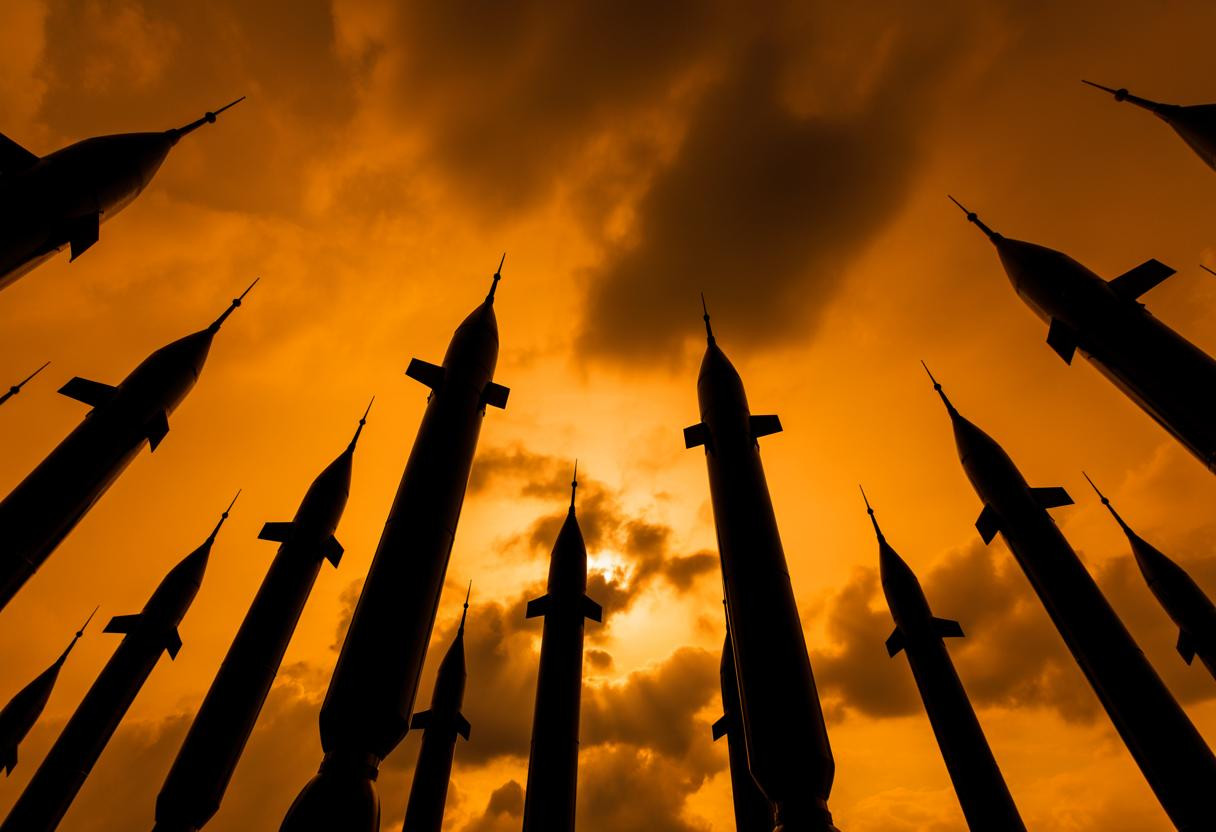When Iran’s Defense Minister General Aziz Nasirzadeh declared “If conflict is imposed on us, all U.S. bases are within our reach,” the statement sent shockwaves through diplomatic circles worldwide. As tensions escalate around stalled nuclear negotiations on June 12, 2025, this isn’t just empty rhetoric—it’s a calculated threat backed by decades of military preparation and regional proxy networks that could reshape Middle Eastern geopolitics overnight.
The escalating crisis behind Iran’s bold ultimatum
The timing of Iran’s warning isn’t coincidental. With U.S. embassies and military bases already evacuating nonessential personnel across the Middle East, the region stands at a critical juncture. Nuclear talks have reached an impasse over America’s demand for zero uranium enrichment—a red line Iran refuses to cross.
The stakes couldn’t be higher. If negotiations collapse, the E3 nations (UK, France, Germany) have threatened to trigger snapback sanctions by August 2025. Meanwhile, UK Maritime Trade Operations has issued warnings about increased military activity in the Persian Gulf and Strait of Hormuz, through which 20% of global oil passes daily.
This escalation follows a pattern that intelligence analysts have tracked for decades. Interestingly, similar crisis prediction methods—like Pentagon’s secret “pizza meter” that accurately predicted 21 global crises—suggest we’re approaching a decisive moment that could determine regional stability for years to come.
Iran’s military capabilities reveal surprising strategic depth
Ballistic missile arsenal targets regional bases
Iran’s threat isn’t merely bluster. The country has developed over 3,000 ballistic missiles with ranges extending across the entire Middle East. Their Shahab-3 missiles can reach targets 1,300 miles away, while newer Khoramshahr missiles boast improved accuracy and multiple warhead capabilities.
What makes this particularly concerning is Iran’s demonstrated willingness to use these weapons. In January 2020, following the killing of General Qasem Soleimani, Iran launched 22 ballistic missiles at two Iraqi bases housing U.S. troops, causing traumatic brain injuries to over 100 American service members.
Proxy network extends Iran’s reach exponentially
Iran’s true strategic advantage lies in its extensive proxy network spanning Iraq, Syria, Lebanon, and Yemen. These groups provide plausible deniability while multiplying Iran’s strike capacity exponentially. Hezbollah alone possesses an estimated 150,000 rockets and missiles—more than most European armies.
Recent intelligence suggests Iran has been coordinating with these proxies more closely than ever before. The decision-making process behind such coordination often involves complex psychological factors, similar to psychological strategies that influence decision-making in high-stakes situations.
The economic earthquake threatening global markets
A conflict involving U.S. bases would trigger immediate economic shockwaves. Oil prices could spike 40-60% within hours of any military action, given the Strait of Hormuz’s critical role in global energy transport. Insurance rates for commercial shipping have already increased 15% since tensions escalated.
The ripple effects extend far beyond energy markets. Regional stock exchanges from Dubai to Kuwait have experienced increased volatility, while $2.3 trillion in regional trade relationships hang in the balance. Financial analysts warn that even a limited conflict could trigger a recession across Gulf economies.
Strategic implications reshape regional power dynamics
Allied relationships face unprecedented strain
Iran’s ultimatum forces difficult choices on regional allies. Saudi Arabia and the UAE, hosting major U.S. bases, now face the prospect of becoming direct targets. This creates a delicate balancing act between maintaining security partnerships and avoiding devastating retaliation.
The situation demonstrates how technological advances can create unintended consequences—Iran’s missile technology, originally developed for defense, now serves as a regional destabilizing force that threatens the very alliance structure it aimed to counter.
Nuclear negotiations reach critical crossroads
With talks scheduled for today, both sides face impossible choices. Iran cannot accept zero enrichment without losing face domestically, while the U.S. cannot appear weak by backing down from its demands. Intelligence sources suggest Iran has already made contingency plans for both diplomatic breakthrough and military escalation.
Navigating the crisis requires immediate strategic recalibration
The current standoff represents more than a diplomatic dispute—it’s a fundamental test of deterrence in the modern Middle East. Iran’s threat reveals the limitations of traditional military superiority when facing an adversary willing to accept massive costs for strategic objectives.
The next 48 hours will likely determine whether diplomacy prevails or the region plunges into its most serious conflict since the Iraq War. As negotiators meet today, the world watches to see if cooler heads can prevent a catastrophe that would reshape not just the Middle East, but global energy security for decades to come.
